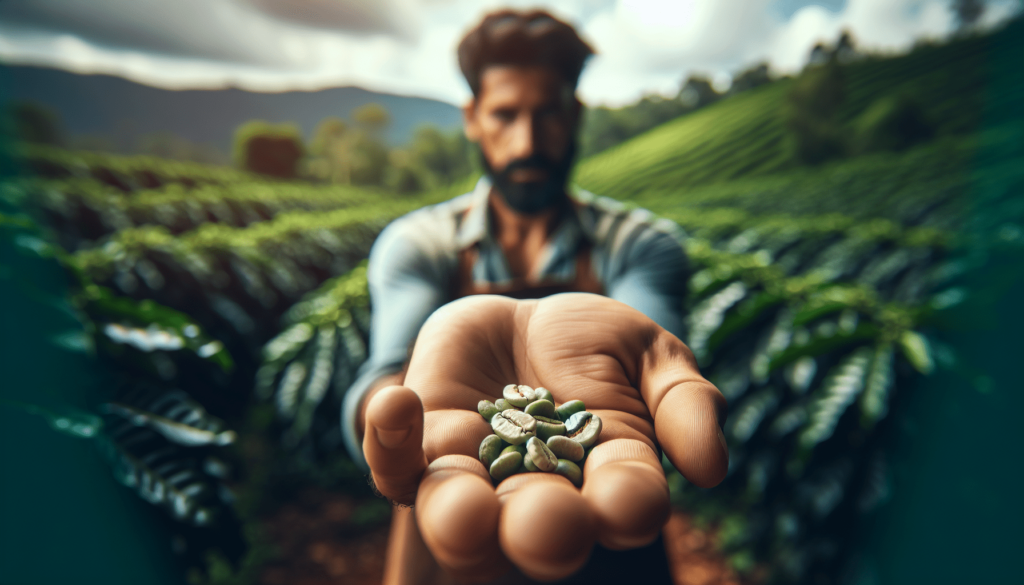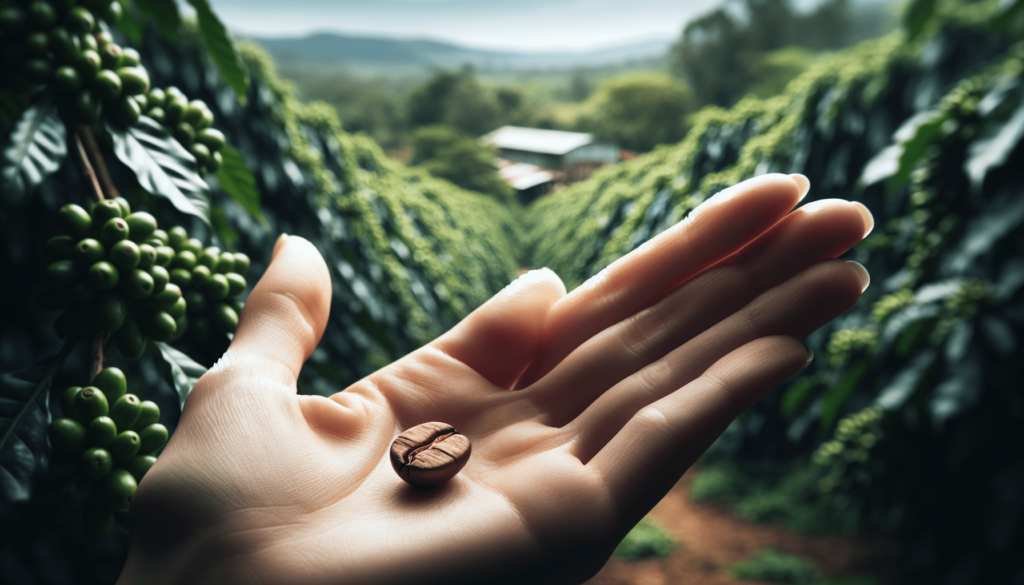Have you ever wondered which coffee beans are the highest quality? If you’re passionate about coffee, you likely know that not all coffee beans are created equal. The taste, aroma, and even the experience of drinking coffee can vary tremendously depending on the quality of the beans. Let’s embark on a journey to uncover the secrets behind the best coffee beans and what makes them stand out.
Understanding Coffee Bean Types
When it comes to coffee beans, three main types dominate the market: Arabica, Robusta, and Liberica. Each of these has distinct characteristics that contribute to their quality and flavor profiles.
Arabica Coffee Beans
Arabica beans are often hailed as the gold standard in the coffee world. These beans are known for their smooth, mild, and aromatic flavor. They are grown at high altitudes where the climate is cooler, promoting a slower growth cycle. This slow growth results in a denser bean with more complex sugars, enhancing the flavor profile.
Key characteristics of Arabica beans:
- Flavor: Sweet and soft with hints of fruity and nutty undertones.
- Acidity: Higher acidity compared to other beans, contributing to a winey and vibrant taste.
- Caffeine Content: Generally lower caffeine content than Robusta beans.
Robusta Coffee Beans
Robusta beans are usually viewed as the stronger, more robust sibling of Arabica. They are grown at lower altitudes and are more resistant to pests and harsh climates. Robusta beans have a stronger, more bitter taste, often described as earthy or woody.
Key characteristics of Robusta beans:
- Flavor: Strong, bold, and somewhat bitter.
- Acidity: Lower acidity which results in a heavier body.
- Caffeine Content: Higher caffeine content, making them more bitter and providing a stronger kick.
Liberica Coffee Beans
While less common, Liberica beans have a unique place in the coffee world. They offer an unusual flavor that can be described as woody, smoky, and somewhat floral. These beans are larger and more irregular in shape compared to Arabica and Robusta.
Key characteristics of Liberica beans:
- Flavor: Complex, with a mix of smoky, fruity, and nutty notes.
- Acidity: Medium acidity with a slightly sharper finish.
- Caffeine Content: Lower caffeine content compared to Robusta.
Factors Determining Coffee Bean Quality
Numerous factors influence the quality of coffee beans, from the geographical location where they are grown to the processing methods used. Understanding these variables can help you identify higher quality beans.
Geographic Origin
Where coffee is grown significantly impacts its quality. Specific regions are known for producing exceptional beans due to their unique climates and soil conditions. For example:
- Ethiopian Coffee: Known for its floral and fruity flavors.
- Jamaican Blue Mountain Coffee: Renowned for its balanced and mild flavor.
- Colombian Coffee: Praised for its rich and smooth taste with a hint of nuttiness.
Altitude
The altitude at which coffee is grown also affects bean quality. Higher altitudes tend to produce beans with more complex and nuanced flavors. The cooler climates at higher elevations cause beans to develop more slowly, allowing for a deeper, richer flavor to develop.
- High Altitude (>1200 meters): Often results in brighter acidity and well-balanced flavor.
- Medium Altitude (600-1200 meters): Produces beans with a balanced acidity and body.
- Low Altitude (<600 meters):< />trong> Generally yields beans with a more robust and earthy flavor.
Processing Methods
The way coffee beans are processed can greatly influence their final flavor profile. The three main processing methods are:
- Washed Process: Beans are fermented to remove the mucilage, resulting in a cleaner and brighter flavor.
- Natural Process: Beans are dried with the fruit still attached, leading to a sweeter and fruitier flavor.
- Honey Process: A hybrid method where some mucilage remains, producing beans that have a balanced sweetness and acidity.
Bean Freshness
Freshness is a vital factor in coffee quality. Beans that have been recently roasted offer a richer and more robust flavor. Always check the roast date and aim to consume coffee within a few weeks of roasting for the best experience.

Certifications and Quality Standards
Another way to gauge coffee bean quality is through various certifications and standards set by coffee organizations around the world. These certifications indicate that the coffee meets specific criteria for quality, sustainability, and ethical practices.
Specialty Coffee Association (SCA) Grading
The Specialty Coffee Association provides a grading system to evaluate coffee beans based on a 100-point scale. Beans scoring 80 points or higher are considered “specialty” and are typically of higher quality.
- Score 90-100: Outstanding grade, often the best of the best.
- Score 85-89.99: Excellent grade, consistently high quality.
- Score 80-84.99: Very good grade, high-quality but may lack some complexity.
Fair Trade Certification
Fair Trade certification ensures that the coffee farmers receive fair compensation and work under decent conditions. While it’s an ethical choice, Fair Trade coffee can also indicate that growers have the resources to focus on bean quality.
Organic Certification
Organic coffee is grown without synthetic pesticides and fertilizers, which can contribute to a purer and possibly more natural taste. This certification assures you that the coffee meets organic farming standards.
How to Choose High-Quality Coffee Beans
Identifying high-quality coffee beans might feel overwhelming, but a few tips can make the process easier. Here are some helpful pointers:
Examine the Roast Date
- Freshness Matters: Choose beans with a roast date as close to the present day as possible. Beans are at their peak flavor within the first few weeks after roasting.
Check for Origin Information
- Transparency Counts: High-quality coffee often includes detailed information about its origin, including the country, region, and even the farm.
Look for Certifications
- Quality and Ethics: Certifications such as Fair Trade, Organic, and SCA grading can help you identify beans that are high-quality and ethically sourced.
Use Your Senses
- Visual Inspection: High-quality beans are generally uniform in size, color, and shape. Avoid beans with too many defects or inconsistencies.
- Smell Test: Fresh, high-quality beans will have a strong, pleasant aroma. If they smell dull or stale, they likely won’t taste great.
Consider the Roast Level
- Personal Preference: While the roast level doesn’t necessarily determine the bean’s inherent quality, it can affect your enjoyment. Light roasts highlight the bean’s origin flavors, while dark roasts bring out bolder characteristics.

Popular Coffee Bean Blends and Their Qualities
Coffee blends combine beans from different origins to create a balanced and often more complex flavor profile. Here are some popular blends and what you might expect from them:
Espresso Blends
- Characteristics: Strong, bold, and full-bodied. They often combine Arabica and Robusta beans for a rich crema and deep flavor.
- Best For: Espresso shots, Americano, and lattes.
Breakfast Blends
- Characteristics: Smooth, mild, and balanced. Usually light to medium roast, often purely Arabica.
- Best For: Morning coffee, drip brew, and pour-over.
French Roast Blends
- Characteristics: Very dark and smoky. These blends typically feature beans that can withstand high-heat roasting without losing their flavor.
- Best For: Dark roast lovers, French press.
House Blends
- Characteristics: Balanced and versatile. These blends aim to appeal to a wide range of preferences.
- Best For: General enjoyment, suitable for multiple brewing methods.
The Art of Brewing High-Quality Coffee
Once you’ve chosen your high-quality beans, brewing them correctly is essential to unlocking their full potential. Let’s go over some crucial brewing tips:
Grinding Your Beans
- Grind Size: The grind size should match your brewing method. For example, use a coarse grind for French press and a fine grind for espresso.
- Freshness: Grind your beans just before brewing to retain their aroma and flavor.
Water Quality
- Filtration: Use filtered water to avoid impurities that can affect the taste.
- Temperature: Aim for water between 195°F and 205°F (90°C to 96°C) for optimal extraction.
Brewing Methods
- Pour-Over: Highlights the bean’s intrinsic flavors with control over brewing time and water flow.
- French Press: Produces a rich and full-bodied coffee but can be prone to over-extraction if not timed correctly.
- Espresso Machine: Delivers a concentrated shot that captures the essence of the bean’s quality.
Brewing Time
- Accuracy Matters: Pay attention to brewing times. Over or under-brewing can significantly affect the taste.
Conclusion: Your Path to High-Quality Coffee
Finding the highest quality coffee beans isn’t just about the beans themselves; it’s also about understanding what factors contribute to coffee quality and how to identify them. From the type of bean to its origin, processing methods, certifications, and even your brewing technique, many aspects come together to define what makes high-quality coffee. Use this knowledge to make informed choices, ensuring that each cup of coffee you enjoy is the best it can be. Happy coffee brewing!
